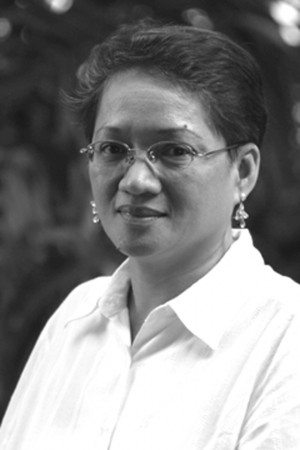
MALOU GUANZON APALISOK
When Inquirer editor Abelardo “Abel” Ulanday, publisher of Cebu Daily News and Inquirer.net formally announced in November this year before a group of CDN editors, officers and columnists that the paper will move to a fully digital platform effective January 1, 2019, a sense of relief and sadness overcame me.
Relief because months or even more than a year prior to the announcement, there have been rumors that this paper will close shop. The departure of former editor in chief, Eileen Mangubat and key business officers from this paper added fuel to speculations about the future so that when Mr. Ulanday did finally tell the Inquirer Group of Companies has decided that CDN will “pivot to a fully digital platform” in 2019, I felt relieved. Still, I can’t help but feel sad because CDN’s DNA is traditional media.
Printed media is so much a part of our culture that in my view, losing the printed form would be akin to burying the body. However, the assault of new media on traditional media forms can no longer be denied. Internet-powered news and entertainment sites have left editors and business executives grappling with the dramatic change in the way people consume news and information. The trend has brought revenues down resulting in cuts in staffing and operations.
Radio, television and newspaper used to be the main sources of news and information but the landscape has totally changed. “Radical connectivity,” the term coined by Harvard Kennedy School faculty, social media expert and author, Nicco Mele points to a constantly connected and technology fueled society (internet plus smart mobile devices), bringing “disruptive changes in a speed and sweep with a force of a category 10 storm.”
At the post-Christmas lunch gathering with foremost environmental lawyer and advocate, also a fellow opinion writer of this paper, Gloria |”Golly” Ramos shared a startling if not shocking result of a survey conducted by Oceana, the international non-government organization committed to protecting and restoring the world’s oceans. Golly sits as Oceana vice-president representing our country.
Oceana recently conducted a survey to ascertain how people consume news and their preferred source of news and information. The survey said television, social media and radio still topped the list but newspapers landed in the cellar, getting a measly 3 % approval of the respondents. I guess one only has to look at the leaner pages of local and national newspapers to validate the results of this particular poll.
Production costs are likewise factored in the slow death of print media. During last week’s fellowship and dinner hosted by Cebu Archbishop Jose S. Palma with the local media, CDN editor-in-chief Ms. Edralyn Benedicto gave a clear picture of why the community paper had to let go of its print edition.
After she assumed in 2016, CDN was able to turn in a modest profit but it cannot cope with the staggering increases in the cost of printing. CDN is sold at P8 per issue but the actual production and printing cost is P20.00.
Market intelligence reports say the cost of newsprint has increased by 15%, forcing some newspapers across the US to publish only Tuesday to Saturday beginning tomorrow.
In light of market forces and new media platforms that revolutionized news and information consumption, the move to a fully digital platform was a hard decision to make for CDN since it also affected a number of employees. My hope is that they will find better opportunities in the New Year.
Last week’s fellowship with the local media was an opportunity for the local church through Archbishop Palma to recognize CDN’s support though its coverage of Church activities and programs for the past 2 decades. CDN’s comprehensive coverage of Church affairs gained traction under the helm of former ed-in-chief Eileen Mangubat and paved the way for CDN to win numerous journalism awards in recent years.
In the sidelines of the event, Monsignor Joseph Tan, spokesman of the Archdiocese said he hopes CDN will be courageous because the struggles along the way can actually enrich the paper’s journey. Going fully digital is a welcome move because according to Monsignor Tan the worldwide web is considered the “new Areopagus”. For lack of space, I hope to discuss this topic in my first digital column next year, God willing.
Ms. Edra Benedicto emphasized the migration from traditional to digital will not in any way alter CDN’s thrust of bringing the news that builds communities. It will still be manned by committed men and women steeped in the journalistic principles of truth, accuracy and fairness. Coupled with new media technology savvy, CDN has a clear advantage as it wades deep in the digital realm.
I can feel Ms. Edra’s excitement at the end of her speech because that’s how the future looks for CDN: Very exciting. The challenges are a given.
Happy New Year, one and all!